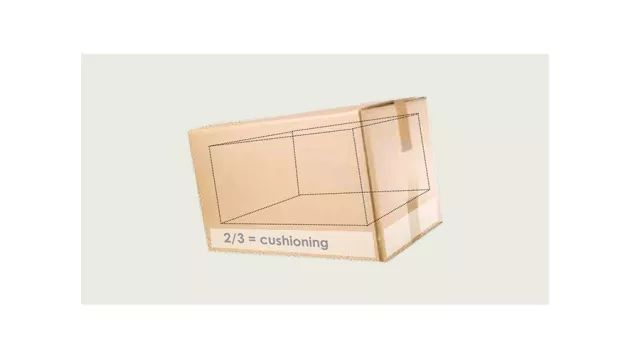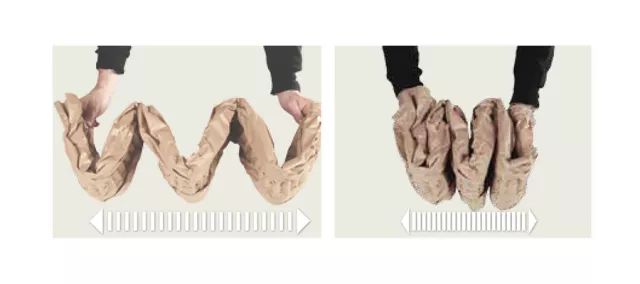During the show CeMAT, a number of industry experts have said that they have seen our Ranpak Padpak paper buffer system, but didn't know much about its application tips
And the followings are 10 basic application tips for Ranpak Padpak paper packaging
Basic 1
For square shaped and round shaped products
For square products it is important to protect the corners. Therefore you should place diagonal crossed pads exactly there where they should offer protection. For round products the corners are not that important, because the distance between product and box is biggest at the corners. It is better to place the pads at the spot where the distance between product and box is smallest.
Basic 2
Always push product together with crossed pads in box.
Doing this you can see that the pads will form itself around the product.
Pushing in the pads first and the product after will be more difficult to get the product in.
On the contrary, it will make the position of products become extremely difficult,
and the protection effect is not good.
Basic 3
Voids bigger than 8 cm, use the pads upright.
Use the strength of the “wave” in the middle of the pad.
For extra strength use spirals and “snakes”.
Use flat pads only for small voids.
To make it easy to remember 2 pads flat okay, 3 pads flat, use a coil instead.
Basic 4
For high, flat products use 4 coils in the corners of the box.
Ideal solution for products like radiators, windscreens and TV-sets.
Vary the height of the coils by playing with the density of it.
Make sure that the coils on top stick out a bit.
When closing the box, the pads are slightly under pressure
and therefore the product is fixated and cushioned ideally.
Basic 5
Try to fixate products as much as possible
By fixating products in the box, the products are packed in a better way with less material.
Fixating is the best way to save on material costs.
Basic 6
Use enough bottom protection
when packing fragile products.
Remember, if a box gets an impact,
the highest chance (70%) that it will be at the bottom
(bottom corner, bottom edge or flat bottom).
Therefore divide as follow: 1/3 of the packaging material on top;
2/3 underneath the product.
Basic 7
For long, narrow products use small coils at the ends (and middle)
Sandwiching a long product between coils
is a very fast, economic and flexible way to secure your product.
Use a coil to get the maximum cuschioning effect of the paper pad.
For lighter products use loose coils, for heavy products use dens coils.
Basic 8
Manually creating and closing a coil
To keep a coil together, just coil the pad to a spiral,
then open up the ends of the paper and push them into the coil.
Now your coil does not open anymore.
Basic 9
Determine pad density
The density of a coil or a snake can be adjusted to light or heavy products.
Use coils or snakes with a higher density for heavy products,
a lower density for light weight products.
Basic 10
Use the flexibility of the paper
PadPak® is a flexible packaging material.
With a flat pad from the machine it is easy to make coils,
corner pads, snake pads or wrap the flat pad in between the products to avoid contact.
For more product information please call us at: 021-33522988-0
.jpg)
.jpg)

.jpg)
.jpg)
.jpg)
.gif)
.jpg)









.jpg)
.jpg)

.jpg)
.jpg)
.jpg)
.gif)
.jpg)







